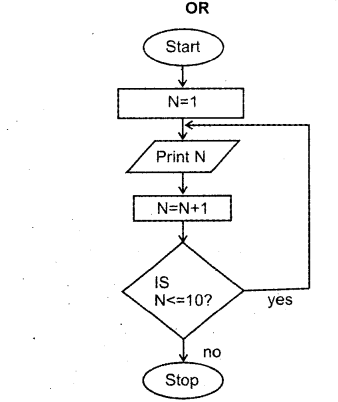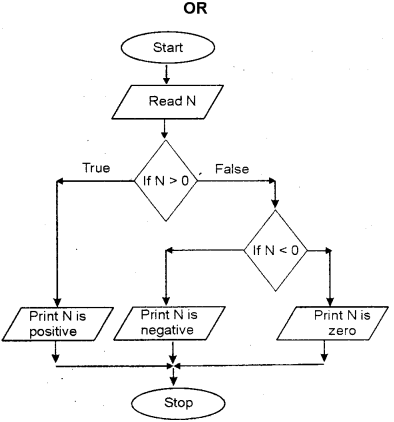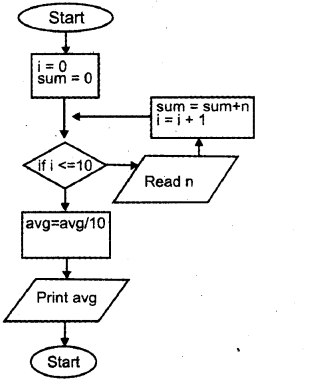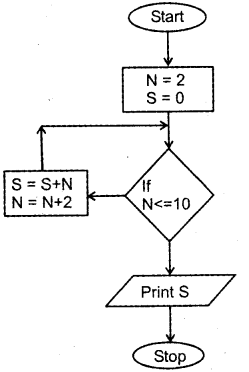Kerala Plus One Computer Science Chapter Wise Previous Questions Chapter 4 Principles of Programming and Problem Solving
Question 1.
Some of the components in the phases of programming are given below. Write them in order of their occurrence. (March – 2015)
a) Translation
b) Documentation
c) Problem identification
d) Coding of a program
Answer:
The chronological order is as follows
1) c) Problem Identification
2) d) Coding of a program
3) a) Translation
4) b) Documentation
Question 2.
a) ……………. is the stage where programming errors are discovered and corrected. (Say – 2015)
Answer:
Debugging or compiling
Question 3.
Ramesh has written a C++ program. During compilation and execution, there were no errors. But he got the wrong output. Name the type of error he faced. (March – 2016)
Answer:
Logical Error
Question 4.
Pick out the software which rearranges the scattered files in the hard disk and improves the performance of the system. (March – 2016)
a) Backup software
b) File compression software
c) Disk defragmenter
d) Antivirus software
Answer:
d) Antivirus software
Question 5.
Which one of the following errors s identified at the time of compilation? (Say – 2016)
a) Syntax error
b) Logical error
c) Run-time error
d) All of these
Answer:
a) Syntax error
Question 6.
Pick the odd one out and give a reason for your finding: (March – 2017)

Answer:
c) This has one entry flow and more than one exit flow
OR
b) Used for both input and output.
Question 7.
Define the term, debugging. Write the names of two phases that are included in debugging. (March – 2015)
OR
Define the different types of errors that are encountered during the compilation and running of a program.
Answer:
Debugging : The program errors are called ‘bugs’ and the process of detecting and correcting errors is called debugging.
Compilation and running are the two phases.
OR
In general there are two types of errors syntax errors and logical errors. When the rules or syntax of the language are not followed then syntax errors occurred and it is displayed after compilation. When the logic of a program is wrong then logical errors occurred and it is not displayed after compilation but it is displayed in the execution and testing phase.
Question 8.
Write an algorithm to input the scores obtained in three unit tests and find the average score. (Say – 2015)

Explain the flow chart and predict the output
Answer:
Step 1 : Start
Step 2 : Read S1, S2, S3
Step 3 : avg = S1 + S2 + S3/3
Step 4 : Print avg
Step 5 : Stop
OR
This flowchart is used to print the numbers as 1, 2, 3, ……….., 10.
Question 9.
Differentiate between top-down design and bottom-up design in problem-solving. (March – 2016)
Answer:
Bottom-up design : Here also larger programs are divided into smaller ones and the smaller ones are again subdivided until the lowest level of detail has been reached. We start solving from the lowest module onwards. This approach is called Bottom-up design.
Question 10.
Write an algorithm to print the numbers upto 100 in reverse order, That is the output should be as 100, 99, 98, 97, …………., 1 (March – 2017)
OR
Draw a flow chart to check whether the given number is positive, negative or zero.
Answer:
Step 1 : Start
Step 2 : Set i ← 100
Step 3 : if i<=0 then go to step 6
Step 4 : Print i
Step 5 : Set i ← i — 1 go to step 3
Step 6 : Stop

Question 11.
Draw a flow chart to input ten different numbers and find their average. (March – 2015)
Answer:

Question 12.
Draw the flow chart to find the sum of first N natural numbers. (Say – 2015)
Answer:

Question 13.
Make a flow chart using the gíven labelled symbols, for finding the sum of all even numbers upto ‘N’ (March – 2016)
OR
Write an algorithm to accept an integer number and print the factors of it.

Answer:
Draw flowchart in any of the following order
e, c, d, f, i, h, a, b, g
e, d,c, f, j, h, a, b, g
e, c, d, a, f, h, b, g
e, d, c, a, f, i, h, b, g
Step 1 Start
Step 2 Input n
Step 3 i = 1
Step 4 if i<=n/2 then repeat step 5 & 6
Step 5 if n%i = = 0 print i
Step 6 i = i + l
Step 7 Stop
Question 14.
Consider the following algorithm and answer the following questions: (Say – 2016)
Step 1 : Start
Step 2 : N=2, S=0
Step 3 : Repeat Step 4, Step 5 while N<=10
Step 4 : S = S + N
Step 5 : N = N + 2
Step 6 : Print S
Step7 : Stop
a) Predict the output of the above algorithm.
b) Draw a flowchart for the above algorithm
Answer:
a) The output is 30

Question 15.
“It is better to give proper documentation within the program”. Give a reason. (March – 2017)
Answer:
It is the last phase in programming. A computerized system must be documented properly and it is an ongoing process that starts in the first phase and continues till its implementation. It is helpful for the modification of the program later.